The article below is by Nabil Rastani which was originally posted on Iranian.com on October 27, 2010. The only difference in the version printed below is that there are pictures and videos not displayed in the original posting.
The author of the article, Nabil Rastani, makes the following acknowledgment below:
Many thanks to Dr Kaveh Farrokh for research into Achaemenid Empires and their military forces namely via the books “Shadows in the Desert: Ancient Persia at War ” and Pierre. Briant: Histoire de l’empire Perse: De Cyrus à Alexandre.
Darius Kadivar, a highly respected writer and critic, also praises the Rastani article by noting:
Enjoyed this greatly Nabil Rastani Jaan. Kaveh Farrokh’s “Shadows in the Desert: Ancient Persia at War “ is a Must Read along with Pierre Briant’s Histoire de l’empire Perse: De Cyrus à Alexandre. Both have done a great job in making Persian History palpable to equally Non Iranians as well as Iranians. Also Kaveh Farrokh’s contributions to the HBO Documentary: “Engineering an Empire” is noteworthy. Thank you again for this wonderful article.
Readers are also referred to the following page (in Persian) which introduces Yusef Amiri’s Persian translation of Nicholas Sekunda’s “The Persian Army: 560-330 BC” (Osprey Publishing, 1992) –معرفی کتاب ارتش هخامنشیان– soon to be published in Iran. For more books and and information on ancient Iranian armies, refer to Yusef Amiri’s Asvaran Blog (click here).
================================================================================
The Immortal (Anûšiya or Anauša) were an elite regiment of hand picked men trained from childhood into elite warriors; they were the imperial guard of the Achaemenid Shahs. According to Herodotus of Halicarnassus the reason why they were called the immortals was because “it was invariably kept up to strength; if a man was killed or fell sick, the vacancy he left was at once filled, so that the total strength of the corps was never less -and never more- than ten thousand.” Surviving Achaemenid colored glazed bricks and carved reliefs represent the Immortals as wearing elaborate robes and gold jewelry, though these garments and accessories were most likely worn only for ceremonial occasions.
Founding and Formation of the Immortals
Cyrus the Great was truly the “King of the four corners of the World” he became the ruler of the most powerful empire on earth -the Assyrians, Bablyonians, Medes, Kurds, Lydians, Parthians, Turks, Armenians and Ionians were all under the heel of the Persians. This was then an empire that stretched from the river Indus to Hellespont in the boarder between Europe. During Cyrus’s conquests, 10,000 of his finest troops were gathered together to create a new regiment – the immortals these were all Iranian men who loyally served the King to their death.
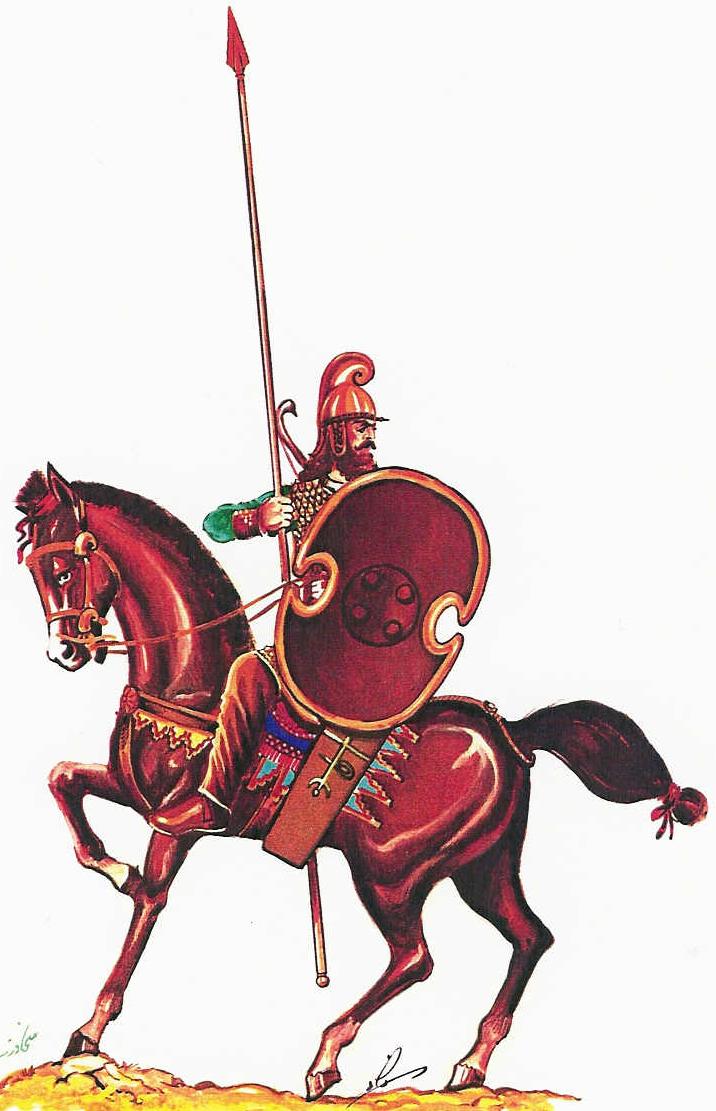
A depiction of a Mede Cavalryman of the later Achaemenid era.
Cyrus’s death is of a mystery, Greek historian Herodotus says that he went up against Massagetaen army and was killed were his head was cut of a dipped in blood. Ctesias claimed that he was slain while attempting to put down a revolt which was aided by Scythian archers and cavalry, plus Indians and their battle elephants, the Persians were heavily outnumbered. Xenophon however tells us in his Cyropaedia that Cyrus died peaceably at his capital of Pasargadae.
Weapons and Training
Only Iranians could join the immortal regiments, they were trained from childhood and young Iranian boys went through rigorous training, according to Strabo, and had to be able to withstand hardship, and so they had to learn to live on wild fruits such as pistachio, acorns, pomegranates and wild pears. The young boys also had to have the ability to tame a wild horse. They learned how to fight, carry weapons, ride horses and then learn the art of archery. Herodotus tells us that the coming of the age of the Immortals was 15 until the age of 50 were they retired and were provided with a form of “ancient pension”. The immortals wore heavy scale amour “looking like the scales of a fish” and thick leather amour, which would have been boiled .They had felt caps which could be pulled over the face to keep out wind and dust in the arid Persian plains it is also possible that during battles they had some from of metal helmet such as bronze. The Immortals wielded shields made from wicker and wood they had their own famous “viola style shields”. This was used to offer protection as well as allowing the user to have the ability to attack an opponent. Three main attacking weapons were used by the immortal infantry, this was the spear a mid range weapon that was 2.5 meters long combat, razor sharp and made from ash wood that’s purpose of this weapon was thrusting. The second weapon for long range was the powerful long bow, this weapon was very powerful and deadly in the correct hands, the immortals being highly skilled could even take out an opponent while on the move. It is possible that the arrows were dipped in Indian cobra poison for more effectiveness against enemies, however no solid evidence is provided on the matter. The close quarter combat weapon was the double edged sword, this was a razor sharp sword that was about 1.25 meters or so long, it would have been ceremonially decorated with a handle engraved with lion heads and gold. It was used for hacking and thrusting. However this was a weapon that was rarely used, it was more or less used for duals with other high ranking warriors and elites. Other weapons and equipment includes the Sagaris, a legendary axe like weapons for dismounting enemies from their horses, it was also an amour piecing weapon and one of its main function was to be used against the heavily armored Greek Hoplites and Scythian cavalry. Greek Hoplon shields made from 2 inches of oak could have been hacked to pieces by the Sagaris axe. Immortals also seemed to have had a but spike on the end of their spear in the shape of a pomegranate these depending on their rank were either pure sliver or gold, they would have been firmly balanced on the immortals toes. According to some historians and scholars they had golden chains and bracelets, possibly a sign of their wealth or high rank in the Achaemenid Persian army.
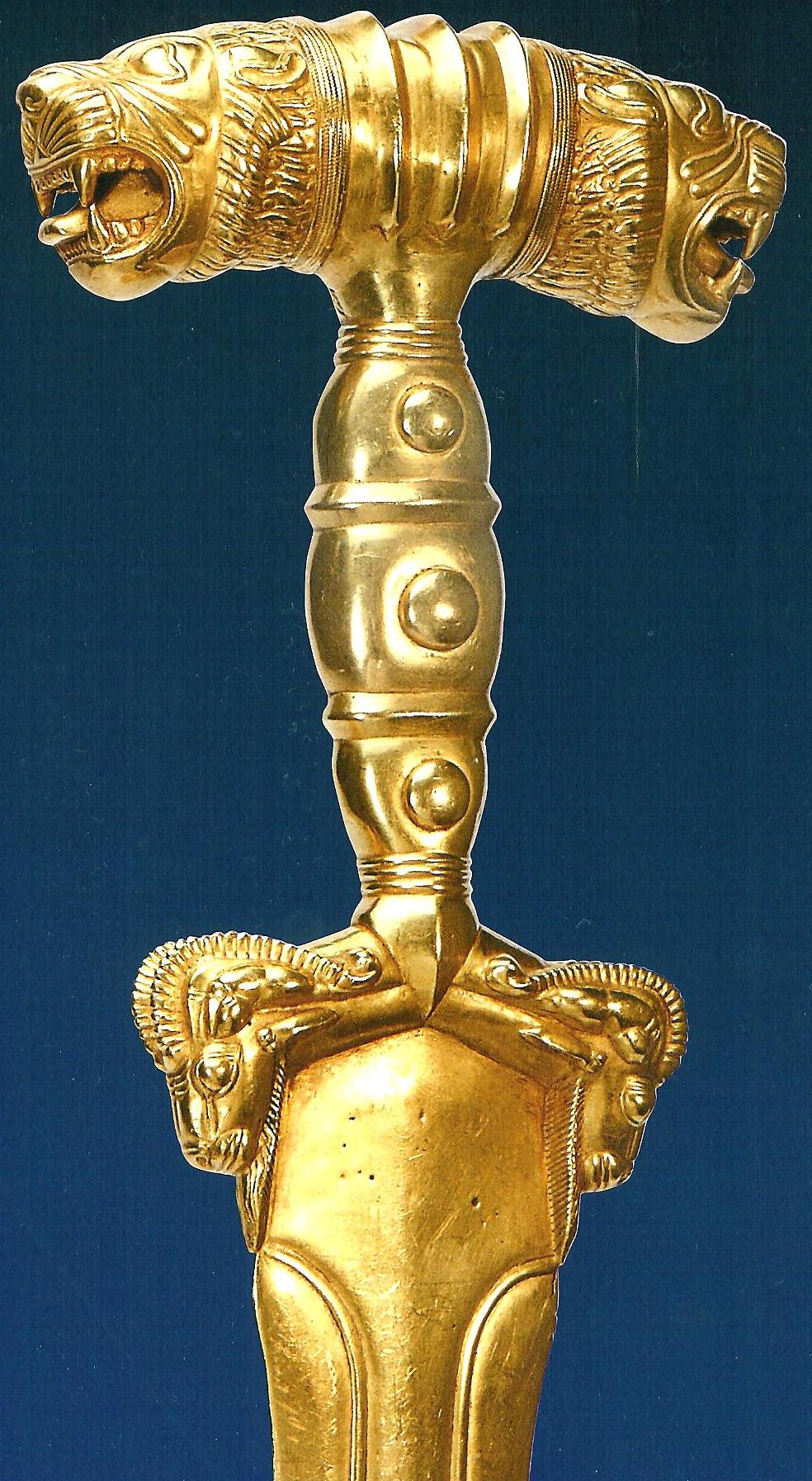
Achaemenid Achenakes. Note the lion and ram motifs, both symbols of ancient Iran (Copyright, Manouchehr Moshtagh Khorasani, Arms & Armor from Iran: The Bronze Age to the End of the Qajar Period , 2006).
Organization of the Immortals
Immortals were split into regiments; these included were made up of the quality of the soldiers as well as their social status. The highest rank of the immortals was the “purple regiments” these were the crème of the Immortals and provided the solid guard of the King, the purple dye known as “Tyrian purple” was collected from a type of sea snail this dye was extremely expensive. These Immortals made up 1,000 of the 10,000 soldiers and had gold pomegranates instead of the standard sliver ones. Other regiments included yellow, red and blue immortals. Immortals regiments was followed by a caravan of covered carriages, camels, and mules that transported their supplies, along with concubines and attendants to serve them; this supply train carried special food that was reserved only for their consumption. Some of the high ranking officers of the Immortals would have killed lions, cheetahs or leopards as a sign of their skill and bravely, similar to that, that was accustom to the Shahs of the Achaemenid Empire. These officers would have then worn the fur of the animal that they would have slain.
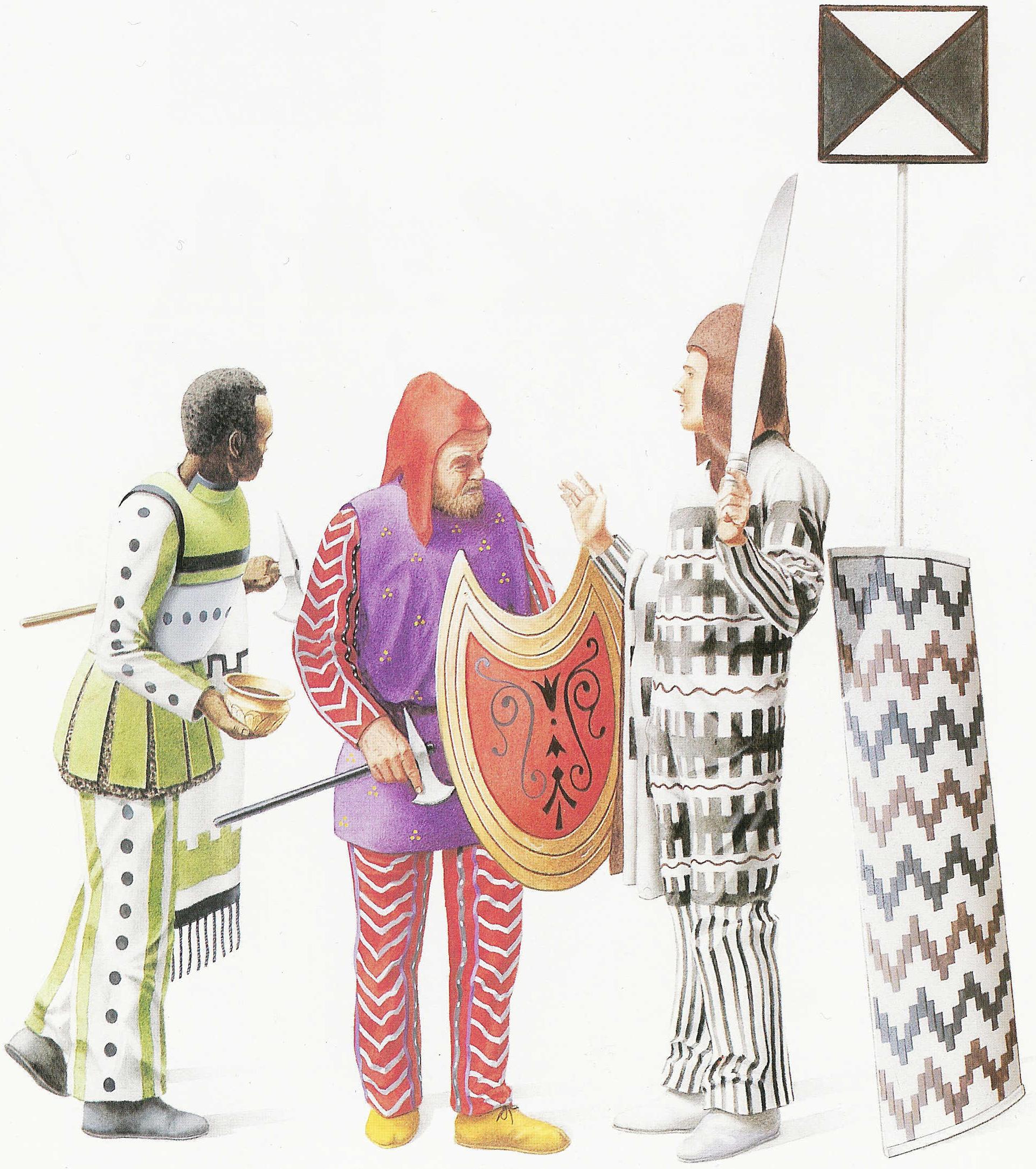
Ethiopian marine (left), Iranian warrior (centre) and Iranian spearbearer (Nick Sekunda, The Persian Army, Osprey Publications, 1992, Plate C; Paintings by Simon Chew).
Appearances in Battles
By far, the Immortals were famed for being used mainly against the Greeks, their where perhaps several contacts between Greeks and Immortals but none of more famous than that of the Battle of Thermopylae (480BC). This battle is well known by historians and is heavily exaggerating in the media. Xerxes and his vast army had set out to Greece to take of Athens and the other states surrounding her. The Greeks decided to form an alliance with each other to fight of the Persian invaders. The fierce state of Sparta was in command of the armies. The Spartan king “Leonidas I” decided to meet the Persians in a set piece battle, at the “hot gates” a narrow pass in northern Greece were there is little room to maneuver forces and solders are all down to quality rather than quantity. The Greeks marched with 7,000 troops (300 Spartans) to the pass in the summer of 480 BC. The Persian army, alleged by the ancient sources to have numbered in the millions (obviously a hyperbole), arrived at the pass in late August or early September. Vastly outnumbered, the Greeks held off the Persians for seven days in total (including three of battle), before the rear-guard was annihilated in one of histories most famous last stands. One the first day Xerxes was actually shocked and surprised of the fact the Greeks would dare stand up to his force with such little numbers. The Greek formation was known as the “Phalanx formation”. The hoplites would lock their shields together, and the first few ranks of soldiers would project their spears out over the first rank of shields. The phalanx therefore presented a shield wall and a forest of spear points to the enemy, making frontal assaults much more difficult. It also allowed a higher proportion of the soldiers to be actively engaged in combat at a given time (rather than just those in the front rank). Xerxes offered surrender to the Leonidas and his men in return for freedom. Leondias refused and after being asked to give their weapons’ up with the famed reply “come and get them”. The battle was to commence, Xerxes first sent in his lightly armed Medes these men wore leather amour with spears and shields. These men were slaughtered in their thousands. Thereafter Xerxes prepared to send in the immortals and Xerxes anticipated that the Greeks would, “being so few, be now disabled by wounds and could no longer resist.”
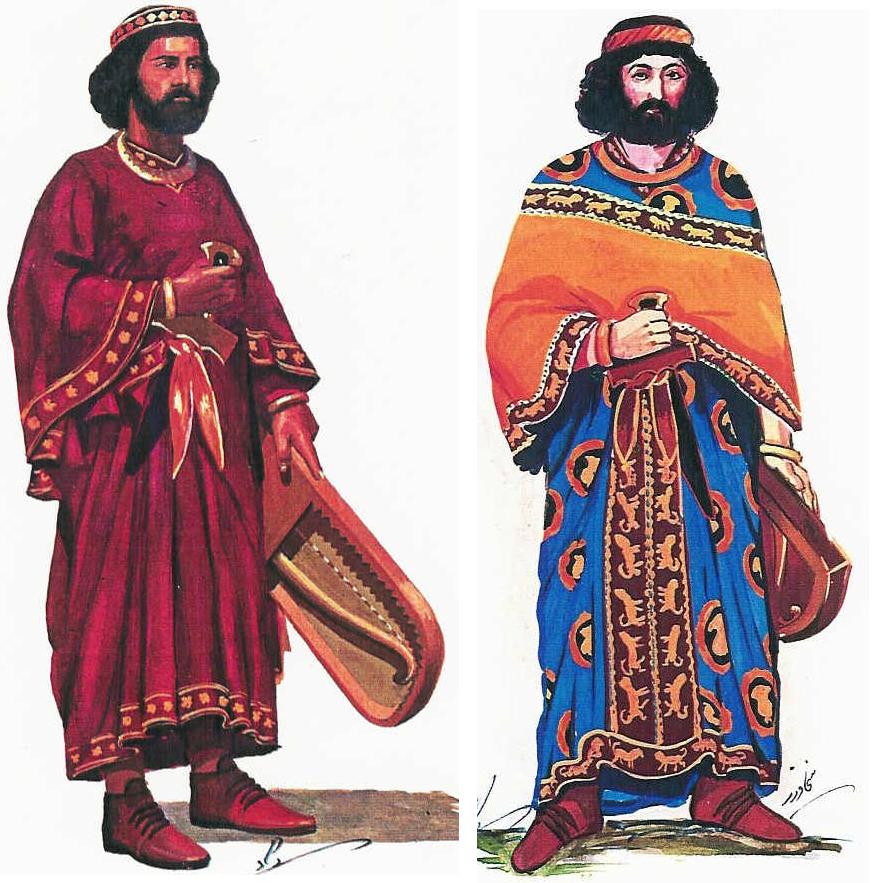
Achaemenid Persian officers as they would have appeared during Xerxes’ invasion of Greece.
The immortals were moved in on the second day of the battle at the crack of dawn. The two most powerful armies stood facing each other in the narrow pass only a few meters away from one another. The commander of the Immortals, Hydarnes (Old Persian Vidarna: “the ripper”) led the charge, before the charge however these warriors send a shock wave throughout the Greek lines causing them to waver but, quickly Leonidias rallied them and the Immortals charged impaling themselves on the forest of Greeks spears, and failed to penetrate their formation. The reason for their defeat was because of the higher quality of the Spartans and Greeks, as well as this they wore heavy Bronze breastplates and Corinthian helmets. The superior training of the Greeks especially the Spartans made a large difference to the outcome of the second day’s battle. Persian Immortal weapons although very competent against other Asian armies, failed to pose a serious threat to that of the Greeks, the Greek armor offered high quality protection and Immortals found it relatively hard to piece through them. However the Greek Dory spear proved fatal against that the of Immortals. A strike from the spear in the correct position could penetrate Immortal scale armor. Even the shields could be pierced if striked at a correct angle and speed.Late on the second day of battle, however, as the Persian king was pondering what to do next and anticipating defeat, he received a windfall; a Trachinian traitor named Ephialtes informed him of the mountain path around Thermopylae and offered to guide the Persian army. Ephialtes was motivated by the desire of a reward. For this act, the name of Ephialtes received a lasting stigma, his name coming to mean “nightmare” in the Greek language and becoming the archetypal traitor in Greek culture.
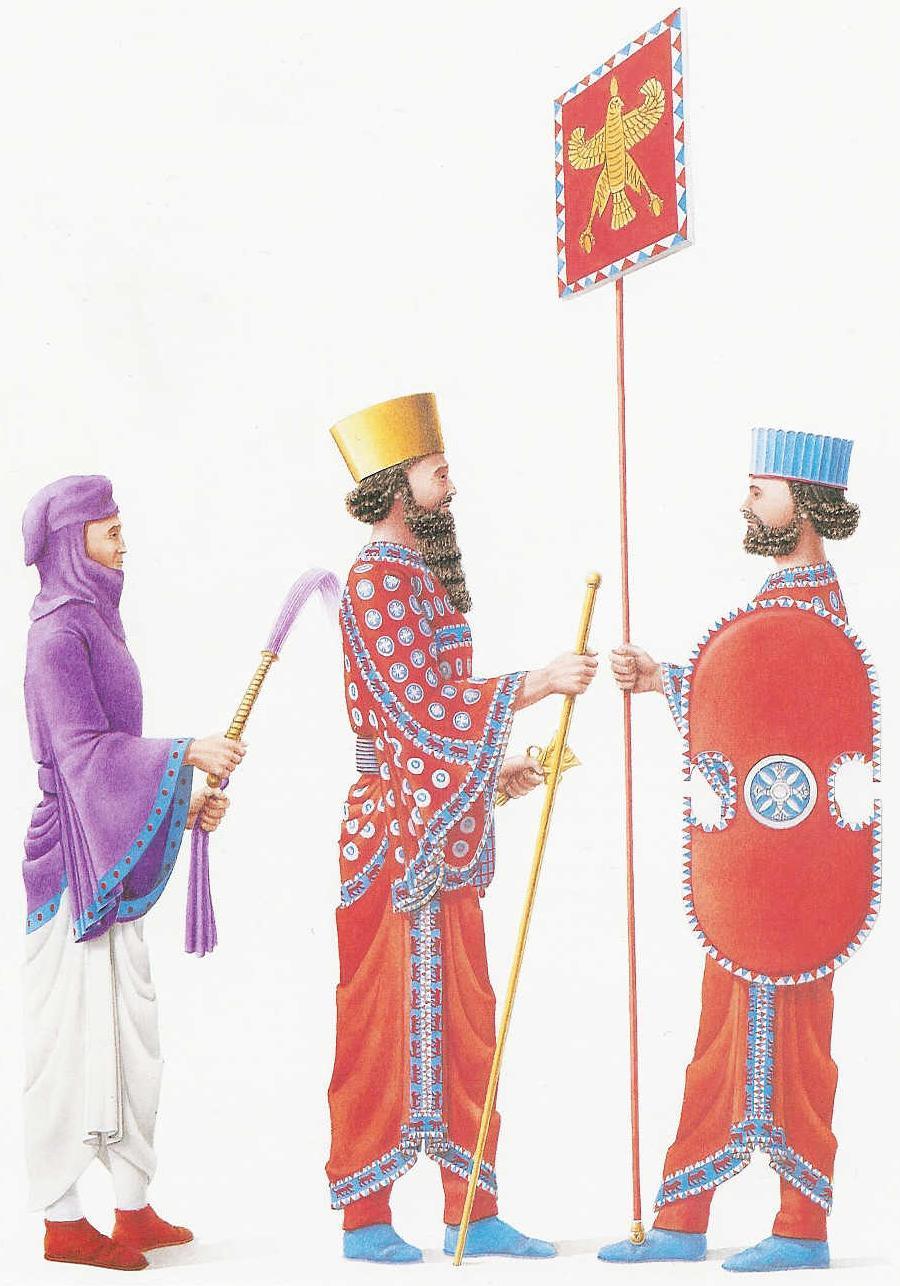
Court Eunuch (left), King Xerxes (centre) and Royal Spearbearer (right). (Nick Sekunda, The Persian Army, Osprey Publications, 1992, Plate B; Paintings by Simon Chew).
Herodotus reports that Xerxes sent his commander Hydarnes that evening, with the men under his command, the Immortals, to encircle the Greeks via the path. However, he does not say who those men are. The Immortals had been bloodied on the first day, so it is possible that Hydarnes may have been given overall command of an enhanced force including what was left of the Immortals, and indeed, according to Diodorus, Hydarnes had a force of 20,000 for the mission. The path led from east of the Persian camp along the ridge of Mt. Anopaea behind the cliffs that flanked the pass. It branched with one path leading to Phocis and the other down to the Malian Gulf at Alpenus, first town of Locris.
The final day led to the destruction of the Greek army these included the famous 300 Spartans who fought the death. After the victory Xerxes ordered the bodies of his men to be buried so as not to affect the moral of his own men. A furious Xerxes cut the head of Leondias and stuck it on a pole. Other examples of battles that included the Immortals are the Battle of Marathon (490BC) the Battle of Salamis in Cyprus (480BC) the Battle of Issus (333BC) the Battle of Gaugamela (331BC) and possibly the Battle of the Persian Gate (330BC) it was at these two battles that under Alexander the Greats attack the Achaemenid Persian Empire fell.
Immortals in Media and Popular Culture
Immortals have appeared in media often, Frank Millers 2007 film 300 heavily fictionalized the appearance of the Immortals; these Immortals wear menpō-style metal masks, and carry a pair of swords closely resembling Japanese wakizashis. The earlier 1962 film The 300 Spartans includes a far less fanciful depiction of the Immortals, who carry a spear and wicker shields like the actual Immortals. However, they are mostly dressed in black and other dark colors, as opposed to historical depictions. In historical documentaries the Immortals are portrayed differently in the “last stand of the 300”, in this version, the helmet the Immortals habitually wear is depicted here as full-face black cloth mask transparent enough to see through. The television program “Deadliest Warrior” featured the Immortals in a comparative (though fictional) battle against the 6th century Celts of Gaul (France) with the out come being the Immortals becoming victorious. The battle was made through of series of different tests, testing out the weapons tactics and training of the two warriors and entering the results into a computer to reveal the true “deadliest warrior”.
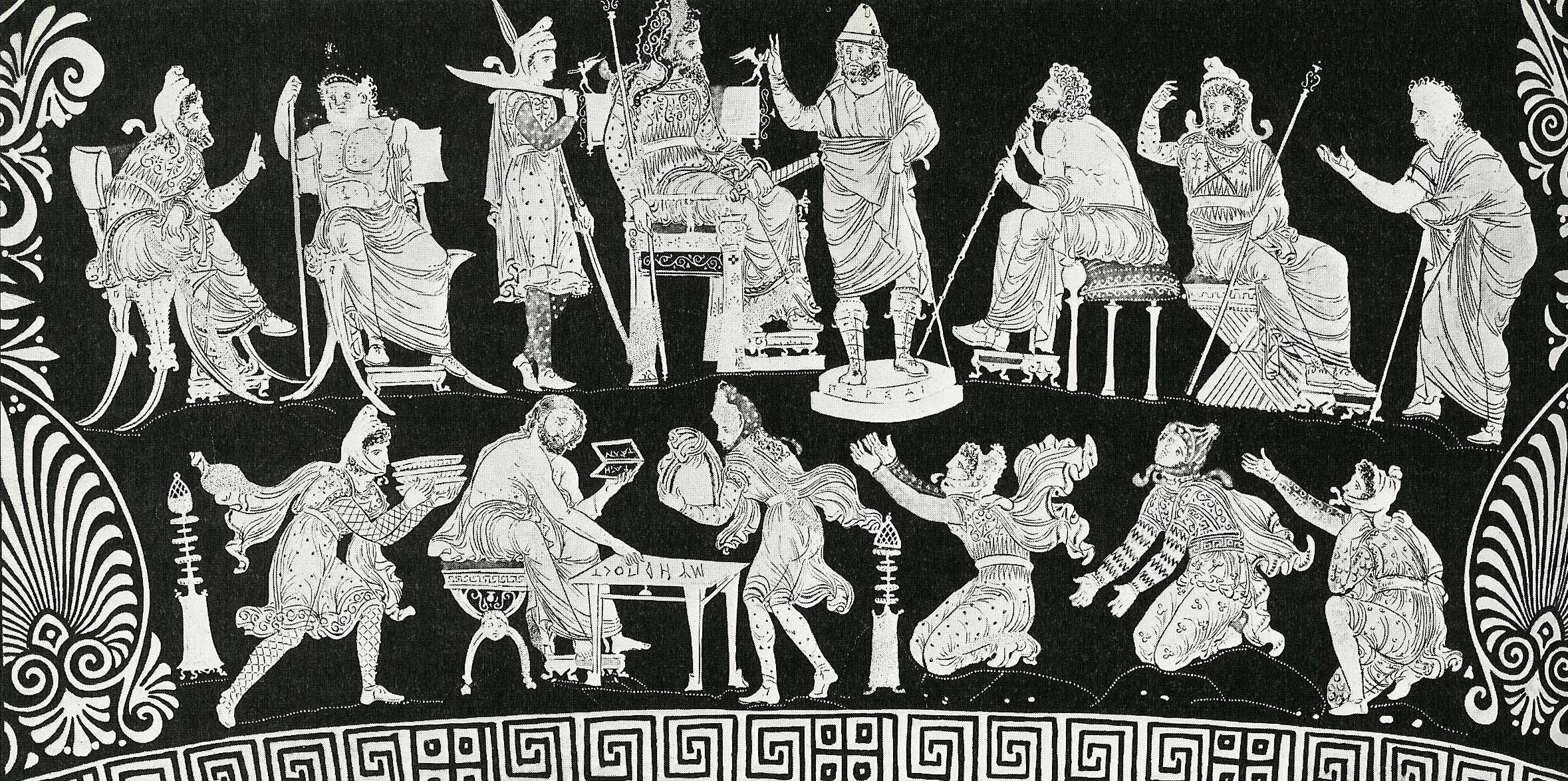
Greek depiction of Darius the Great (seated on throne in top row at centre) debating with his advisors as to whether he should invade Greece in 490 BC. Prince Xerxes is seen on the top row, second from the right.
The Immortals also feature in several strategy computer games, including Rome total war Alexander, a game that features the Immortals as the elite guards of the Achaemenid Kings; they are generally shown as being historically accurate except for their lack of armor and discipline. They also appear in the game Civilization III (where the Immortals are an infantry unit uniquely available to the Persians, though in its sequel, Civilization IV, they are inaccurately depicted as a mounted unit).
Legacy
The title of “Immortals” was first revived under the Sassanid army. The most famous of the Savaran units were the Zhayedan (Immortals) and numbered 10,000 men, like the Achaemenid predecessors, with the difference that they were cavalry. Their task was mainly to secure any breakthroughs and to enter battles at crucial stages.
The Jyanavspar with the Sassanian style of sword-forward thrust – known in the West as the “Italian Grip”. The Warrior is engaged against Roman troops during the failed invasion of Emperor Julian in 363 AD (Farrokh, Sassanian Elite Cavalry, 2005, Plate D; Paintings by Angus McBride).
The title of “Immortals” was again revived under the Byzantine Empire, under the Emperor Michael VII (1071–1081). His general Nikephoros reorganized the central field army (“Tagmata”) of the Eastern Empire following the disastrous defeat of Manzikert by the Turks in 1071. The remnants of the provincial troops of the Eastern Themes (military provinces) were brought together in a new Imperial Guard regiment named after the Persian Immortals and reportedly also numbering about 10,000 men.
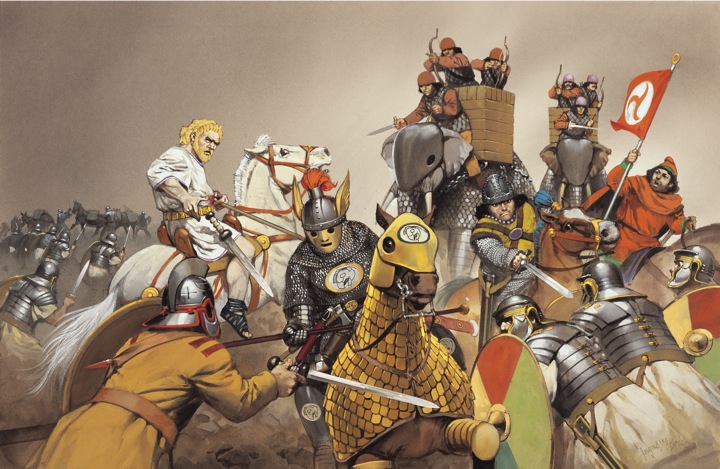
The Pushtighban Heavy Knights of the Royal Guard charging into Roman lines during Emperor Julian’s failed invasion of Sassanian Persia in 363 CE (Farrokh, Sassanian Elite Cavalry, 2005, Plate D; Paintings by Angus McBride).
Many centuries later during the Napoleonic Wars/Wars of the Coalitions, French soldiers referred to Napoleon’s Imperial Guard as “the Immortals. The modern Iranian Army under the last Shah included an all volunteer Javidan Guard, also known as the “Immortals” after the ancient Persian royal guard. The “Immortals” were based in the Lavizan Barracks in Tehran. By 1978 this elite force comprised a brigade of 4,000–5,000 men, including a battalion of Chieftain Tanks. Following the overthrow of the Imperial regime in 1979 the “Immortals” were disbanded.
Sources and Bibliography
Many thanks to Dr Kaveh Farrokh for research into the Achaemenid Empire and their military forces namely via the books “Shadows in the Desert: Ancient Persia at War ” and Pierre Briant’s Histoire de l’empire Perse: De Cyrus à Alexandre.
Histoire de l’empire perse: De Cyrus à Alexandre, Paris, 1996. Gh. Gnoli, “Antico-persiano anušya-




